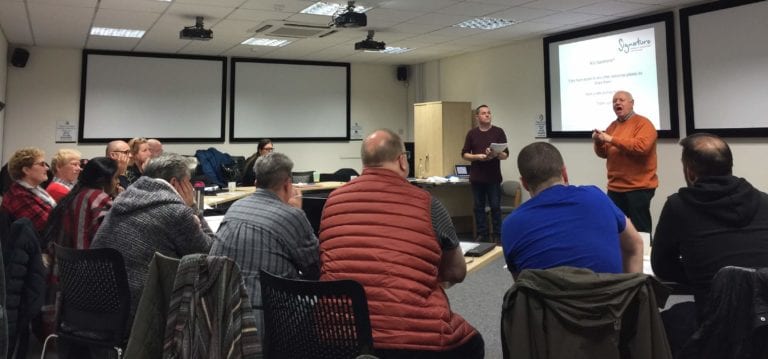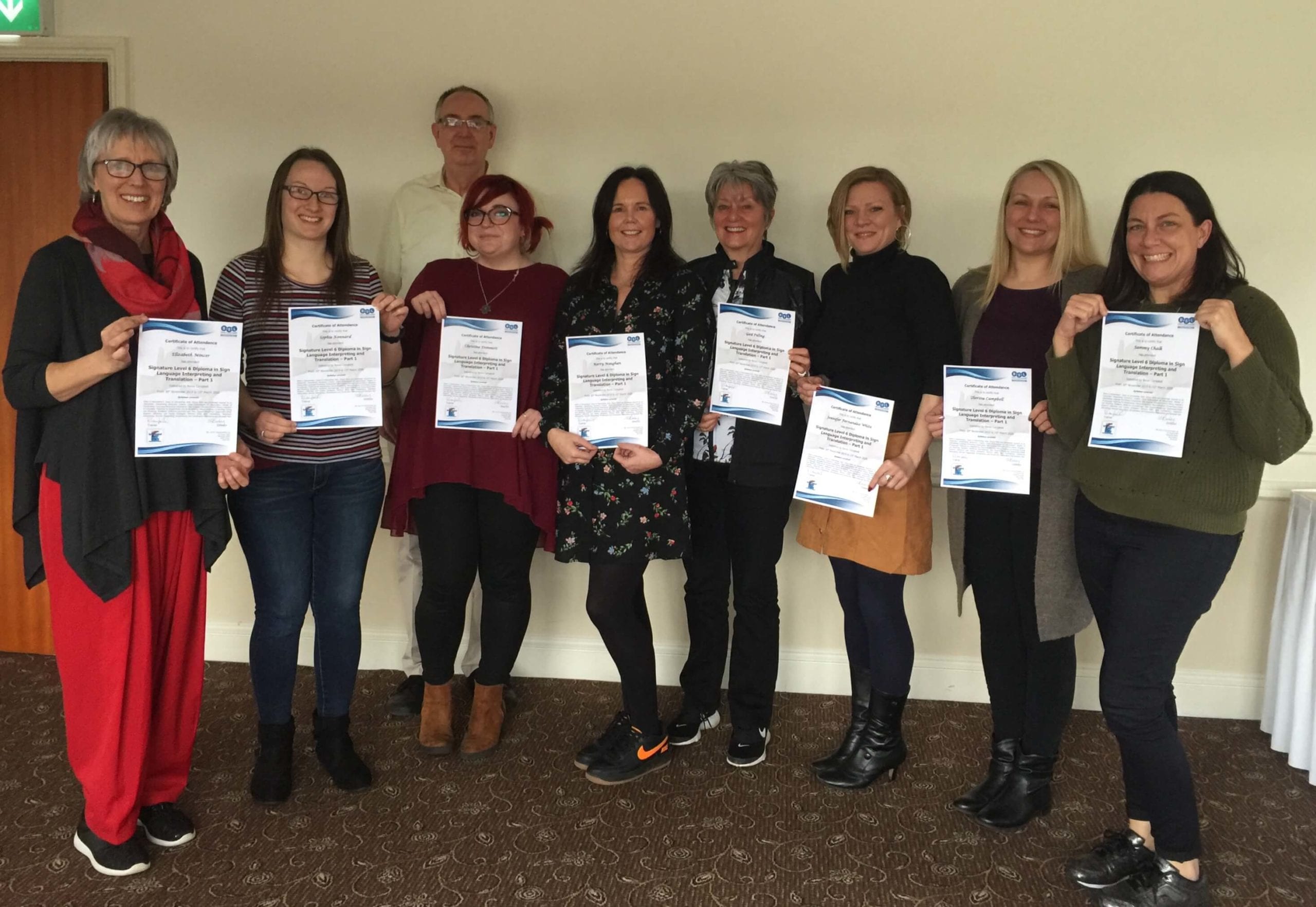Working with BSL / English Interpreters

Interpreting requires a great deal of concentration. The recommended optimum time for an interpreter to work is around 20 minutes. After this time, the interpreter will need a break, if they are working alone. For meetings and events longer than two hours, two interpreters are necessary so they can co-work with each other and take turns to interpret.
For a BSL user, watching an interpreter for a long period of time can also be very tiring. If a Deaf person stops watching the interpreter to rest, they may miss vital information. This means that Deaf people may appreciate breaks during long presentations.
In BSL interpreting it is the meaning of the message that is interpreted, not each individual word. It is difficult for the interpreter to deal with information they do not fully understand, so any preparatory information you can give the interpreter in advance will be most useful. Copies of scripts, handouts, presentations etc. are useful, as is a glossary of any particularly difficult terminology. This information should, ideally, be available well in advance, depending on the quantity and nature of the content. The interpreter may also want to ask some questions about the meeting or conversation before it starts to get a clear idea of the topic and any jargon.
If you are showing videos, ideally the interpreter should view the video beforehand. The interpreter will need to stand next to the screen to enable Deaf people to see the interpreter and the screen at the same time. Don’t switch the lights off unless the interpreter can be lit in a different way. This is also true of overhead projection and PowerPoint presentations. You will need to show the slide, talk and then give the audience another chance to look at the slide. During the meeting or conversation, the interpreter may need to interrupt the person speaking or signing and ask them to repeat the message or explain in more detail, to make sure the message is interpreted correctly.
There may be a slight delay in the conversation as it takes time for the interpreter to process the message before interpreting it into the other language.
When asking questions of a group, you may need to pause to allow the Deaf person time to respond.
Only one message can be interpreted at a time, so it is important that only one person speaks/signs at a time.
If you have planned the chance for Deaf and hearing people to socialise during a break, consider that an interpreter may be needed but remember that interpreters also need time to rest.
The interpreter and Deaf participants must be very easy to see so they should always be placed in good light. Interpreters should never be placed in front of a window, or with light coming from behind as this will cast shadows on their face, masking their expressions.
The background behind the interpreter should be plain. Vivid patterns or a harsh white background can be distracting or painful to the eye.
When giving presentations, speak at a normal pace. Speak clearly and naturally in full sentences. In a one-to-one situation always address the Deaf person, not the interpreter, even though the Deaf person will not always be able to look at you. The interpreter is saying exactly what each person is saying, so will say/sign ‘I’ and ‘my’
In a mixed setting of Deaf and hearing people, address the audience in general. Don’t ask the interpreter any questions or make comments to them; their job is not to get involved, just to pass the message on.

For further information, please see the following websites:
http://www.signature.org.uk/british-sign-language
